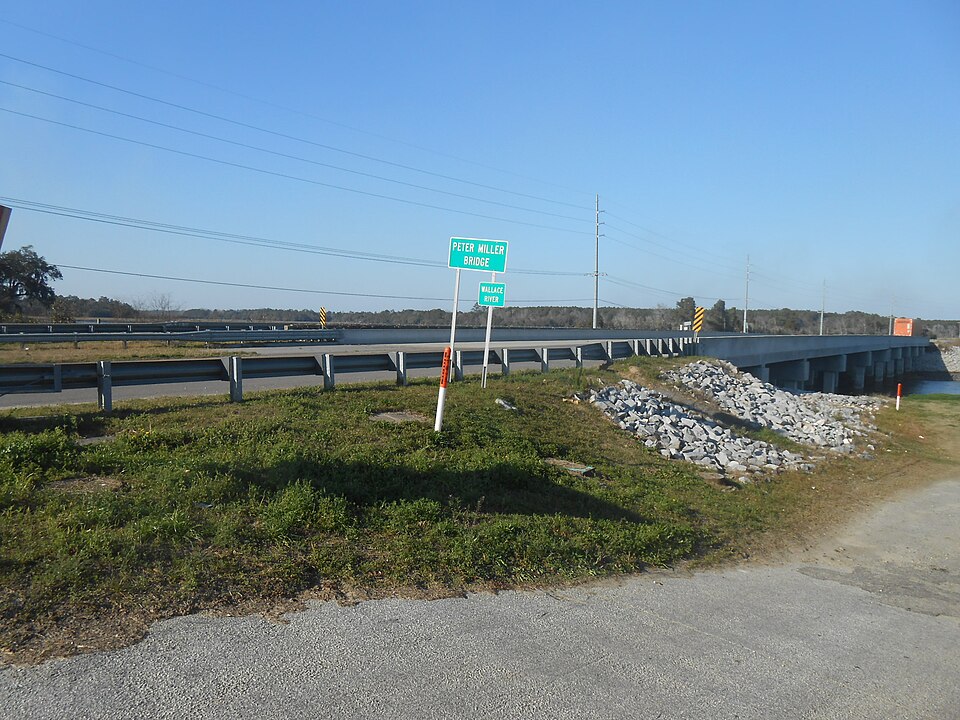On 9 September 1739, near the banks of the Stono River in South Carolina, around sixty African slaves rose up against their masters. Led by Jemmy, known as “Cato”, they marched toward Spanish Florida, flags raised and drums beating, shouting “Liberty!”. Though crushed in blood, this insurrection was one of the first collective cries for freedom in North America, long erased from textbooks but still alive in the memory of descendants.
The fire beneath the ashes
In 1739, South Carolina stood as one of the richest colonies in North America. Its rice and indigo fields enriched the planters, but this prosperity rested on a brutal truth: the massive enslavement of Africans. For several decades, ships had been unloading on its shores captives torn from the Gulf of Guinea, to the point that enslaved people now formed the demographic majority. A silent majority, but simmering, faced with a white minority clinging to its privileges and obsessed with the fear of an uprising.
What the colonists feared finally came to pass. One September morning in 1739, near the Stono River, the embers that had long smoldered ignited. Men in chains, women reduced to movable property, decided to raise their voices against the established order. Their cry was simple, but universal: liberty.
The African roots of the rebellion
The Stono insurgents were not just any slaves. Behind the chains and irons lay complex trajectories from the other side of the Atlantic. Most of them came from the Kingdom of Kongo, an African state long Christianized, where Catholicism and the Portuguese language had penetrated as early as the 15th century. This spiritual heritage was no detail: it formed a cultural glue which, in the middle of the South Carolinian plantation world, united the captives and offered them a common language, both religious and political.
Many of these men were not simple peasants reduced to servitude. The Kongo of the 18th century, ravaged by civil wars and succession conflicts, had thrown onto the Atlantic market seasoned fighters, men accustomed to military discipline. Deported to the Americas, these warriors became slaves, but they did not forget either the art of war or the meaning of resistance. It was this African baggage, forged in the fire of conflict, that would turn a handful of captives into strategists capable of shaking South Carolina.
The immediate causes
The outbreak of the uprising in September 1739 was no accident but the convergence of several circumstances. In Charleston, a malaria epidemic had just decimated part of the white population. Weakened, the masters were more anxious than ever but also, involuntarily, less vigilant.
The choice of date was not innocent either. The revolt broke out the day after the Feast of the Nativity of Mary, a moment of religious fervor for Kongolese slaves, whose Catholic faith, inherited from Africa, sustained invisible solidarity. This coincidence gave the enterprise a sacred resonance: to rise up was also to carry out a kind of spiritual mission.
But the main driving force remained the horizon of freedom. For several years, Spain, established in Florida, had been promising land and protection to fugitives who reached Saint Augustine, on the condition that they pledge loyalty to the crown and serve in the local militia. For slaves crushed by British planters, the promise sounded like possible deliverance.
Finally, colonial legislation opened a window of opportunity. The Security Act, passed a few weeks earlier, required every white man to carry arms, including on Sundays at church. Yet at the moment of the rebellion, the law had not yet been enforced. The rebels knew they were striking on a day when their masters, unarmed and distracted by mass, were more vulnerable than ever.
The uprising: chronicle of a blaze
On Sunday, 9 September 1739, before the church bells rang, a handful of men gathered near the Stono River, some twenty kilometers from Charleston. Their leader was named Jemmy; some called him “Cato”. A literate slave, likely trained in arms in Africa, he was no improvised leader. Around him stood twenty to twenty-two companions, all determined to break their chains.
The first blow was struck at Hutchinson’s Store, an isolated shop. Two colonists were killed, weapons seized, gunpowder taken. For the insurgents, there was no turning back: blood had been shed.
Then the march began. Flags raised, drums beating, the column advanced southward, toward Spanish Florida. With each step, their cry resounded like a challenge: “Liberty!”. The procession grew: slaves joined voluntarily or compelled, plantations set ablaze in their wake. Twenty to twenty-five colonists were killed, sometimes pitilessly, sometimes spared. The fire spread, in every sense of the word.
But the colony did not take long to react. By chance, Lieutenant Governor William Bull crossed paths with the group. He raised the alarm and mobilized nearby planters. An improvised but determined militia set off in pursuit. Confrontation erupted near the Edisto River. Armed and better organized, the colonists offered fierce resistance. The rebellion, despite its momentum, met there the full force of colonial order.
Repression and reprisals
The battle at the Edisto was brief but bloody. The rebels fought with ferocious rage, killing proportionally more colonists than any later revolt. But their numerical and material disadvantage proved fatal. Nearly half of the insurgents fell on the spot, while survivors tried to flee into the surrounding marshes.
The colonists’ victory did not end on the battlefield. It continued in a calculated display of terror. The severed heads of the captives were planted on pikes along the roads to Charleston, as so many warnings. Anyone who thought of rising up had to face this macabre spectacle: freedom cost the price of torture.
The survivors fared little better. Many were hunted down, captured, and summarily executed. Others, considered less dangerous, were shipped to the Caribbean, condemned to disappear in the anonymity of the slave trade. At the end of this merciless repression, South Carolina believed it had restored order. In reality, it had inscribed in the memory of slaves a story of courage and resistance that even the gallows could not erase.

Legacies and scars
The Stono Rebellion, brutally crushed, left deep marks. The legislative response was immediate: in 1740, the South Carolina Assembly passed the Negro Act, a text that tightened the noose around the Black population. Henceforth, slaves no longer had the right to gather, to learn to read, to grow their own food, or to earn money from independent work. The objective was clear: to smother at the root any hint of organization or protest.
On the social front, colonists chose suspicion and withdrawal. Newly imported Africans, often seen as more “untamable,” were blamed for insurrections. Planters thus moved toward a policy aimed at developing a servile population born locally, presumed more docile. This calculation marked a turning point in the evolution of the slave system in America.
But beyond laws and numbers, Stono left a symbolic imprint. For a long time, authorities and textbooks silenced the episode, fearing that its memory would inspire new revolts. Yet 9 September 1739 remains one of the earliest collective cries for freedom on North American soil. Long before the great revolts of the 19th century, the slaves of Stono had affirmed, by force of arms, that they were not mere objects of commerce but human beings capable of rising together.
Thus, if repression sought to erase all traces of resistance, it did not prevent history from retaining the act. In the silence imposed by the executioners, the drums of Stono continued to beat, reminding that America was not built solely on the freedom of colonists but also on the revolts of the oppressed.
The flame beneath the terror
The Stono uprising, though drowned in blood, was far more than an episode of colonial violence. It was a first fissure in the slaveholding edifice, proof that domination, no matter how brutal, could never completely extinguish the aspiration to freedom.
Accounts diverge depending on the viewpoint. For 18th-century colonists, Stono was a crime to be suppressed with utmost severity, a threat to the social order that had to be eradicated. But for African descendants and, more broadly, for African-American memory, this revolt resonates as a proclamation of humanity, an act of dignity in a world that refused to recognize them as full human beings.
In the end, the drums of Stono have never ceased to beat. They remind us that the history of the Americas was written not only in the liberty proclaimed by colonists but also in the revolts of the oppressed. The drums of Stono still resound, recalling that the history of the Americas was written as much in chains as in uprisings.
Notes and references
(les références sont traduites telles quelles, titres conservés)
Herbert Aptheker, American Negro Slave Revolts, 5th ed., New York, International Publishers, 1983, pp. 187-189.
Ira Berlin, Many Thousands Gone: The First Two Centuries of Slavery in North America, Cambridge, Belknap Press, 1998, p. 73.
Peter Charles Hoffer, Cry Liberty. The Great Stono River Slave Rebellion of 1739, Oxford University Press, 2010.
Jack Shuler, Calling Out Liberty: The Stono Rebellion and the Universal Struggle for Human Rights, University Press of Mississippi, 2009.
Marjoleine Kars, “1739 – Stono Rebellion”, in Ballard C. Campbell (ed.), Disasters, Accidents, and Crises in American History, New York, Facts on File, 2008, pp. 22-23.
Mary Elliott & Jazmine Hughes, “A Brief History of Slavery That You Didn’t Learn in School”, The New York Times Magazine, 19 August 2019.
Steven J. Niven, “The Stono River Slave Rebellion Was Nearly Erased from SC’s History Books”, The Root, 22 February 2016.
Adam Gabbatt, “A Sign on Scrubland Marks One of America’s Largest Slave Uprisings”, The Guardian, 24 October 2017.
The Stono Rebellion, Africans in America, PBS, accessed 10 April 2009.
Contents
The fire beneath the ashes
The African roots of the rebellion
The immediate causes
The uprising: chronicle of a blaze
Repression and reprisals
Legacies and scars
The flame beneath the terror
Notes and references
